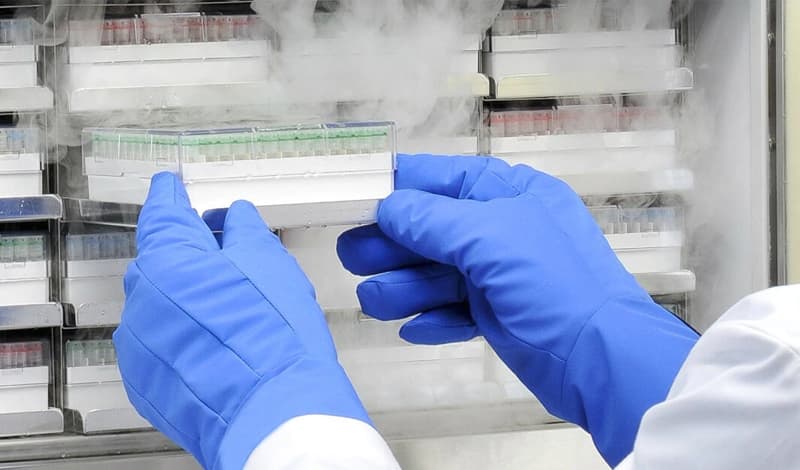Introduction
In industries such as food processing, pharmaceuticals, and manufacturing, maintaining strict environmental conditions is crucial for product quality, safety, and regulatory compliance. Factories and cold storage facilities must constantly monitor temperature, humidity, air quality, and other environmental factors to prevent product spoilage, ensure worker safety, and optimize operational efficiency.
With the Internet of Things (IoT), businesses can now implement automated monitoring systems that provide real-time data, predictive analytics, and remote control capabilities. This article explores how IoT-powered environmental monitoring is transforming industrial operations and cold storage management.
1. The Importance of Environmental Monitoring
In industrial settings, environmental conditions can directly impact production processes, equipment lifespan, and regulatory compliance.
For factories, poor air quality, temperature fluctuations, or humidity imbalances can lead to:
- Product defects and quality issues
- Increased equipment wear and maintenance costs
- Worker health risks and safety concerns
- Regulatory violations and fines
For cold storage facilities, even minor deviations in temperature can result in:
- Food spoilage and massive financial losses
- Compromised pharmaceutical products that lose efficacy
- Violation of storage regulations leading to legal risks
By implementing IoT-based environmental monitoring, businesses can ensure consistent conditions, early issue detection, and automated alerts for better control.
2. Key IoT Solutions for Environmental Monitoring
a. Smart Temperature & Humidity Sensors
Maintaining precise temperature and humidity levels is critical in factories and cold storage. IoT sensors can:
- Monitor real-time temperature variations
- Detect humidity fluctuations to prevent mold and corrosion
- Send automated alerts if conditions go out of range
- Log historical data for compliance reporting
In cold storage, IoT sensors ensure that refrigeration units function correctly, preventing spoiled goods and unnecessary energy consumption.
b. Air Quality & Gas Detection Systems
In industrial manufacturing, air pollution from chemical processes and machinery can be harmful. IoT-based air quality sensors can:
- Measure CO₂, VOCs, and particulate matter levels
- Detect toxic gas leaks to prevent worker exposure
- Ensure compliance with OSHA and environmental safety regulations
This helps create a safer work environment and reduces health risks for employees.
c. Automated Cooling & Ventilation Control
IoT-powered HVAC (Heating, Ventilation, and Air Conditioning) systems can:
- Adjust cooling and heating based on sensor data
- Optimize airflow for energy efficiency
- Reduce unnecessary power consumption in off-peak hours
For cold storage, automated cooling control ensures stable refrigeration without wasting energy or overloading the system.
d. Predictive Maintenance for Industrial Equipment
IoT sensors can track performance metrics of cooling units, air filters, and factory machinery. Predictive maintenance helps:
- Identify early signs of system failure
- Schedule proactive maintenance to avoid downtime
- Reduce repair costs and increase equipment lifespan
This ensures that both factories and cold storage facilities operate without unexpected breakdowns.
e. AI & Data Analytics for Environmental Insights
IoT systems generate massive amounts of data. AI-powered analytics can:
- Identify environmental trends affecting production
- Optimize cooling and ventilation schedules
- Provide real-time dashboards for managers
With data-driven decision-making, businesses can reduce waste, improve efficiency, and comply with industry regulations.
3. Benefits of IoT-Based Environmental Monitoring
1. Improved Product Quality & Safety
- Stable environmental conditions prevent spoilage and contamination
- Ensures compliance with HACCP, FDA, and GMP standards
- Reduces waste and product recalls
2. Energy Efficiency & Cost Savings
- Automated cooling and ventilation cut down electricity costs
- Predictive maintenance reduces repair expenses
- Smart analytics optimize energy usage
3. Worker Safety & Regulatory Compliance
- Detects harmful air pollutants and gas leaks
- Ensures compliance with occupational safety laws
- Minimizes legal risks and fines
4. Remote Monitoring & Real-Time Alerts
- Managers can track conditions from anywhere
- Instant alerts allow quick response to environmental issues
- Reduces manual monitoring costs
4. Real-World Applications of IoT in Factories & Cold Storage
1. Food & Beverage Industry
- Ensures cold chain integrity for frozen and perishable goods
- Maintains consistent refrigeration in warehouses and trucks
- Prevents foodborne illnesses due to improper storage
2. Pharmaceutical Storage
- Ensures vaccines and medications are stored at correct temperatures
- Prevents drug degradation due to humidity exposure
- Complies with WHO and FDA storage requirements
3. Heavy Manufacturing Plants
- Monitors air pollution and toxic gas leaks
- Prevents equipment overheating and failures
- Ensures safe working environments for employees
4. Logistics & Warehouse Operations
- Tracks temperature-sensitive shipments in transit
- Optimizes warehouse cooling systems to reduce costs
- Provides real-time data for supply chain efficiency
5. Challenges & Future of IoT Environmental Monitoring
Despite the advantages, some challenges remain:
- High initial investment in IoT infrastructure
- Integration complexities with existing systems
- Cybersecurity risks in cloud-based monitoring
The Future of Environmental Monitoring
Advancements in AI, blockchain, and 5G will improve IoT monitoring by:
- Enhancing real-time data processing for instant alerts
- Using AI for self-learning systems that adjust settings automatically
- Implementing blockchain for transparent compliance records
Future IoT systems will be even smarter, more secure, and fully automated, ensuring optimal environmental control in industrial settings.
Conclusion
IoT-based environmental monitoring is revolutionizing factories and cold storage facilities by enhancing safety, reducing costs, and ensuring regulatory compliance. As energy costs rise and environmental regulations tighten, businesses that adopt IoT solutions will gain a competitive advantage through efficiency and sustainability.
Interested in implementing an IoT-based environmental monitoring system? Contact us to learn how smart sensors, AI analytics, and automated controls can optimize your operations.



 Tiếng Việt
Tiếng Việt